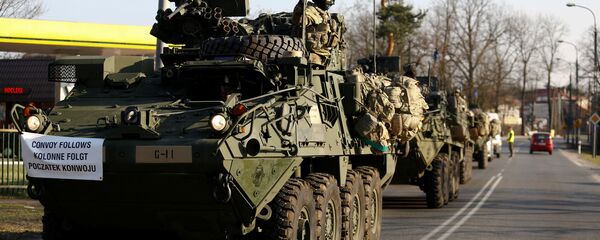At the turn of the millennium, the United States went on a massive military spending binge. According to the 2010 report “Debt, Deficits & Defense”, within several years of 9/11, the budget of the Department of Defense grew by 119%. Barack Obama and his predecessor George W. Bush were ruling a nation which was fighting wars in Iraq and Afghanistan, but even with war costs subtracted, the increase was at 68%, which is 13% more than the sum allocated for health and human services.
Pentagon’s global military presence has always been a costly affair. David Vine is the author of the book “Base Nation: How U.S. Military Bases Abroad Harm America and the World”. In his 2015 New York Times Op-Ed he wrote that the US taxpayers spent 10 to 40 thousand dollars a year more for each service member stationed abroad, compared with those at home.
Ron Paul – a former US congressman and the founder of the Ron Paul Peace Institute – addressed the wasteful military spending in one of his columns in November of 2016, saying that military expenses should not be confused with the defense budget. While defense expenses are vital, military spending, according to Paul, is the money spent not to defend the United States, but “to enrich the military-industrial complex, benefit special interests, regime-change countries overseas.” In his article, the former politician wrote that some activities of the US military and intelligence services abroad may lead to the country’s economic collapse:
“Do we really need 800 US military bases in more than 70 countries overseas? Do we need to continue to serve as the military protection force for our wealthy NATO partners even though they are more than capable of defending themselves? Do we need our CIA to continue to provoke revolutions like in Ukraine or armed insurgencies like in Syria? If the answer to these questions is “yes,” then I am afraid we should prepare for economic collapse in very short order.”
Donald Trump shared the same concerns about America’s NATO allies, when he called the organization obsolete during his campaign. Trump upheld some of his criticism during the 2017 NATO summit in Brussels when he called on the wealthy organization members to increase their defense spending.
N.A.T.O. is obsolete and must be changed to additionally focus on terrorism as well as some of the things it is currently focused on!
— Donald J. Trump (@realDonaldTrump) March 24, 2016
However, it seems that Trump’s words have fallen on deaf ears. Germany still spends just 1.26% of its GDP on defense (which is much less than the 2% pledge made by NATO member states in 2014), so paying for the maintenance of the large military facilities, such as Ramstein Airforce Base, which also hosts NATO Allied Air Command, is a heavy burden for America’s taxpayers.
In 2015, David Vine estimated that the annual price for maintaining US military facilities and troops abroad was about $85 billion. He wrote that closing down foreign and domestic military facilities will contribute to improving the country’s financial and physical security.
However, with Donald Trump’s recent proposals to increase military spending, it seems that the chances of seeing major changes in the US global military presence strategy in the near future are slim.



